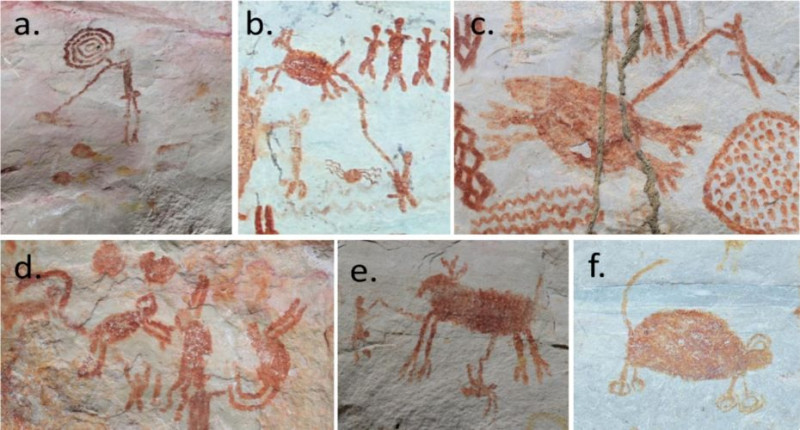On the rock are thousands of red ocher paintings, depicting geometric shapes, human figures, handprints, hunting scenes, plants, trees and animals
Anthropologists are excited by a huge petroglyph discovered in Colombia, in a rocky area of the Serranía de la Lindosa.
The 13km-long petroglyph was discovered by a team of British and Columbian scientists in 2020 and is dated to between 12,600 and 11,800 years ago.
The petroglyph, although huge, was only discovered 4 years ago due to political instability in the area of Colombia where it was found.
“These paintings are the earliest evidence of humans in the western Amazon and date back 12,500 years,” said Mark Robinson, an associate professor at the University of Exeter and a member of the research team.
What do the paintings depict?
On the rock are thousands of red ocher paintings, depicting geometric shapes, human figures, handprints, hunting scenes, plants, trees and animals of the savannah.
Although it is not certain exactly what these prehistoric people were trying to express, “the paintings enhance our understanding of the power of myth in indigenous communities,” said José Iriarte, a professor at the University of Exeter and co-author of the study.
Some paintings show animal-human hybrids, whose myths still live on in some indigenous Amazonian tribes.
In total, the researchers recorded 3,223 paintings using drone photogrammetry and conventional photographic techniques. Over 50% of the images depict animals. Of the 22 species of animals recorded by the scientists, large carnivorous felines are absent, despite their dominant position as predators in the area.
With information from Gizmodo – Photos: University of Exeter
Source :Skai
With a wealth of experience honed over 4+ years in journalism, I bring a seasoned voice to the world of news. Currently, I work as a freelance writer and editor, always seeking new opportunities to tell compelling stories in the field of world news.











